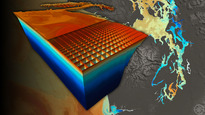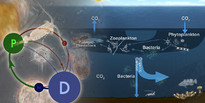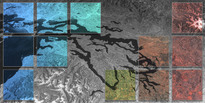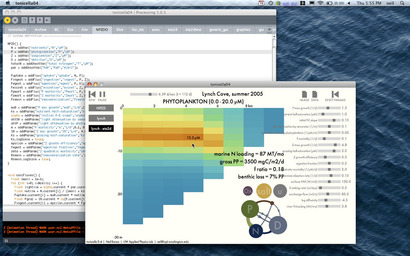Modeling circulation on the decadal scale
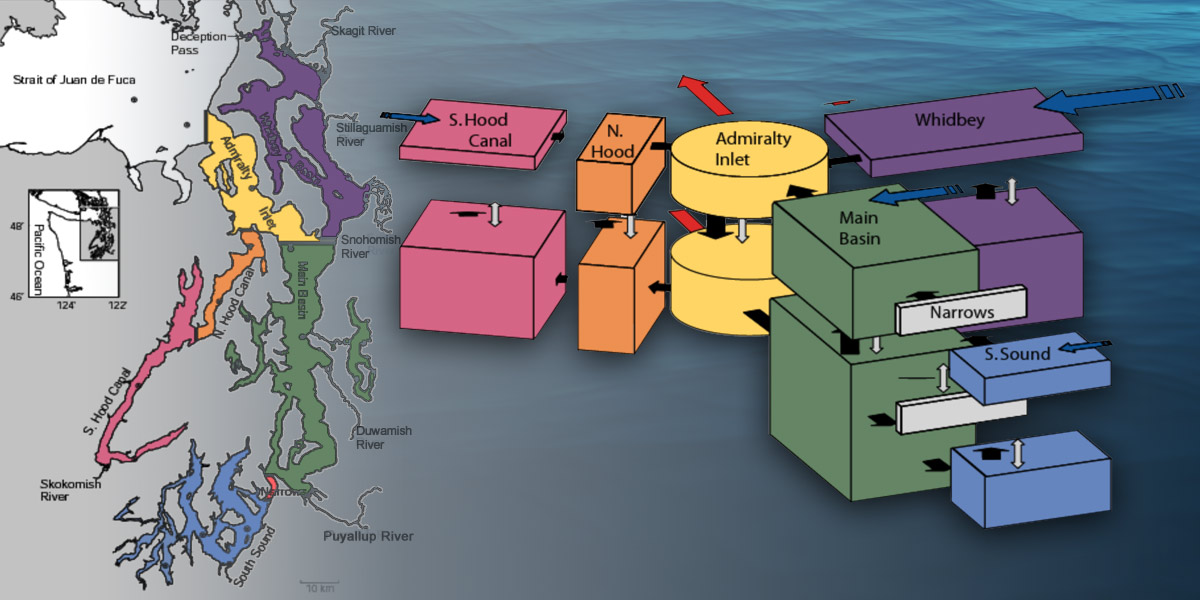
Examining century-long processes with fast, simpified models
Complementing high-resolution circulation models with simpler, faster models lets us extend our modeling capabilties farther into the future and past. This is essential for understanding the effect of long-period natural cycles (like ENSO or the Pacific Decadal Oscillation) on Puget Sound via changes to terrestrial or oceanic inputs, and also for forecasting the effect of climate change on the Sound over the next century.
Babson et al. (Atmosphere Ocean, 2006) introduced a box model of Puget Sound which divides the Sound into seven basins, each with a slab-like surface and deep layer. They used this model to study interannual variation in residence time and transport rates.
Currently, Dr. Neil Banas, in collaboration with the UW Climate Impacts Group, is developing a mid-complexity model system for Puget Sound, with greater vertical resolution than a box model, but much less detail than a three-dimensional circulation model like ROMS. This system for developing small, segmented models is named Tonicella after the small, segmented shell of the lined chiton (Tonicella lineata), which lives in Pacific Northwest intertidal zones. This poster presented at the 2009 Coastal and Estuarine Research Federation meeting describes an application of Tonicella, coupled to a planktonic ecosystem model, to Lynch Cove at the southern tip of Hood Canal, including a comparison with nutrient, oxygen, and phytoplankton data. The longer-term goal of this work is to create a model of Puget Sound and the Salish Sea that 1) correctly reproduces interannual variation in water properties and currents, 2) is fast and portable enough to run in a web browser, and 3) takes century-scale forecasts of changes to runoff and terrestrial nutrient loading in our region as inputs.
